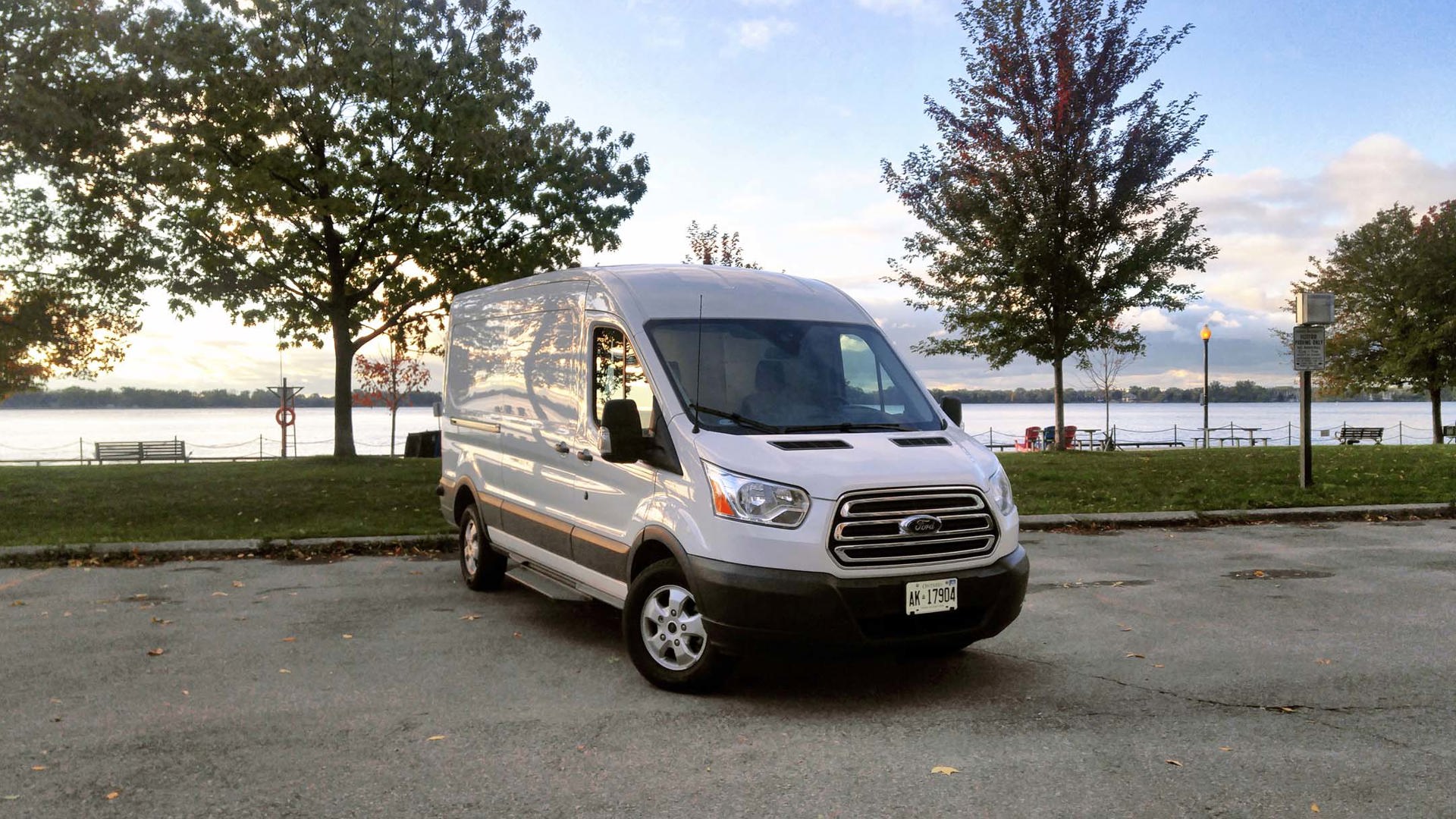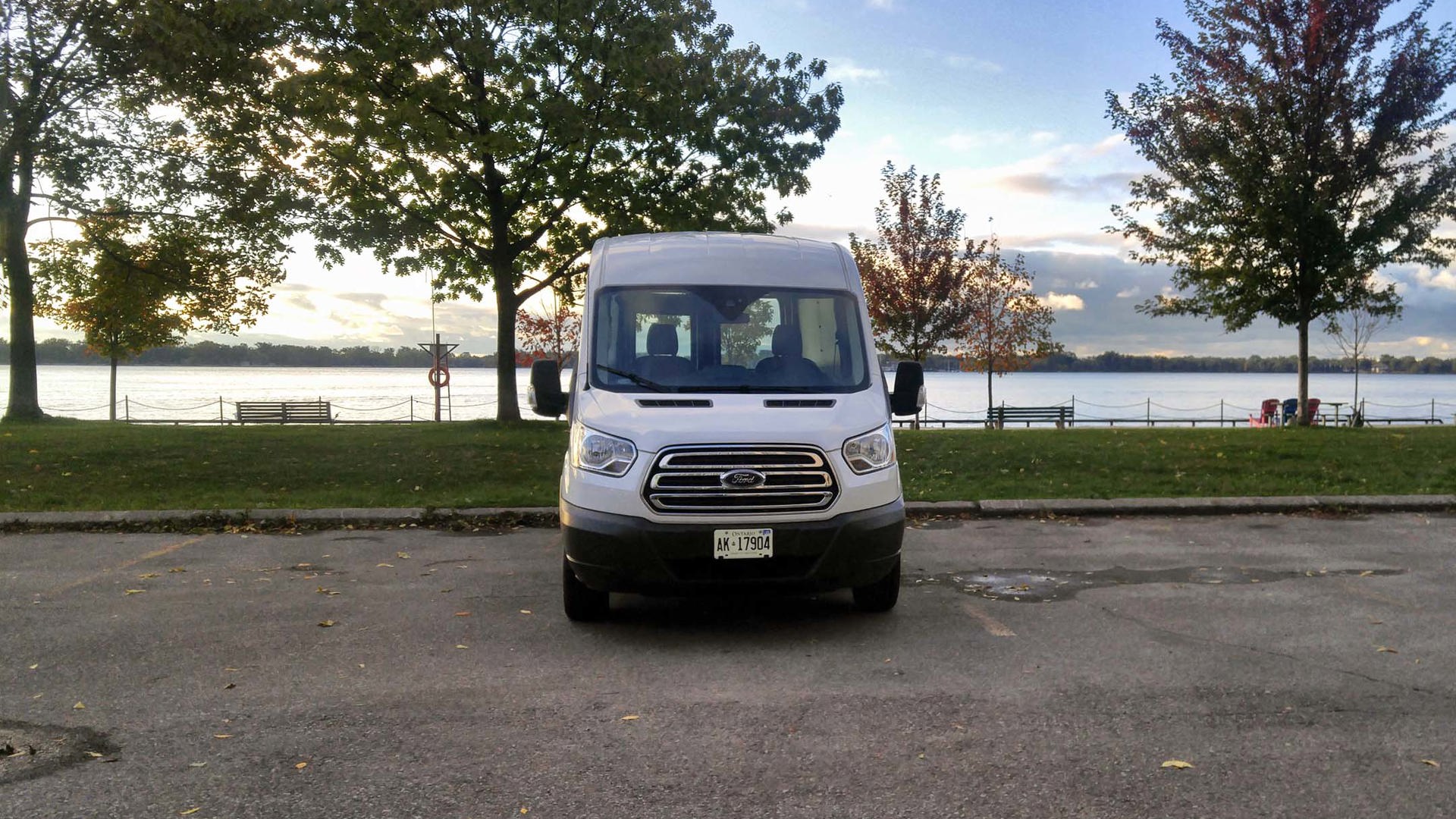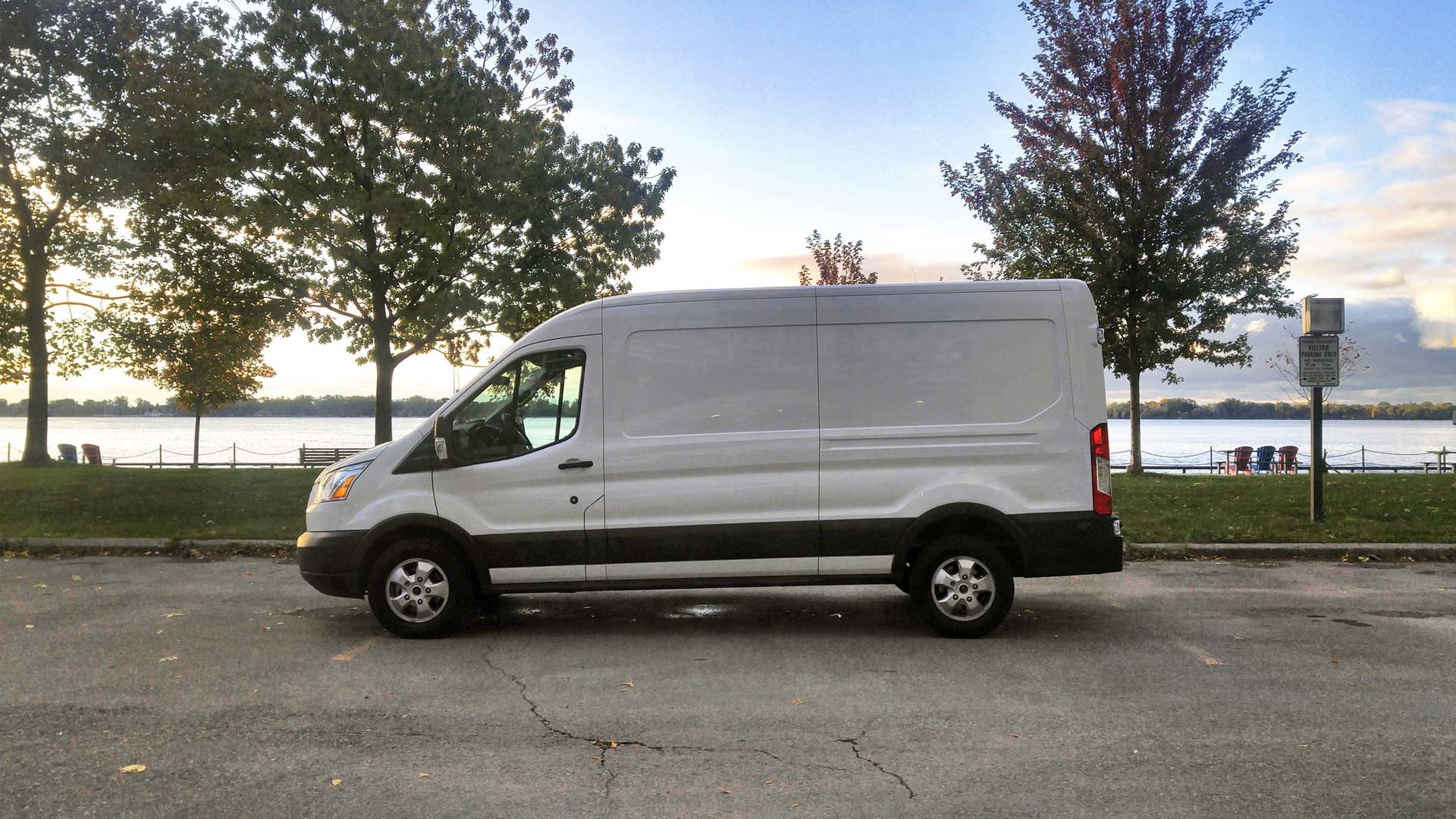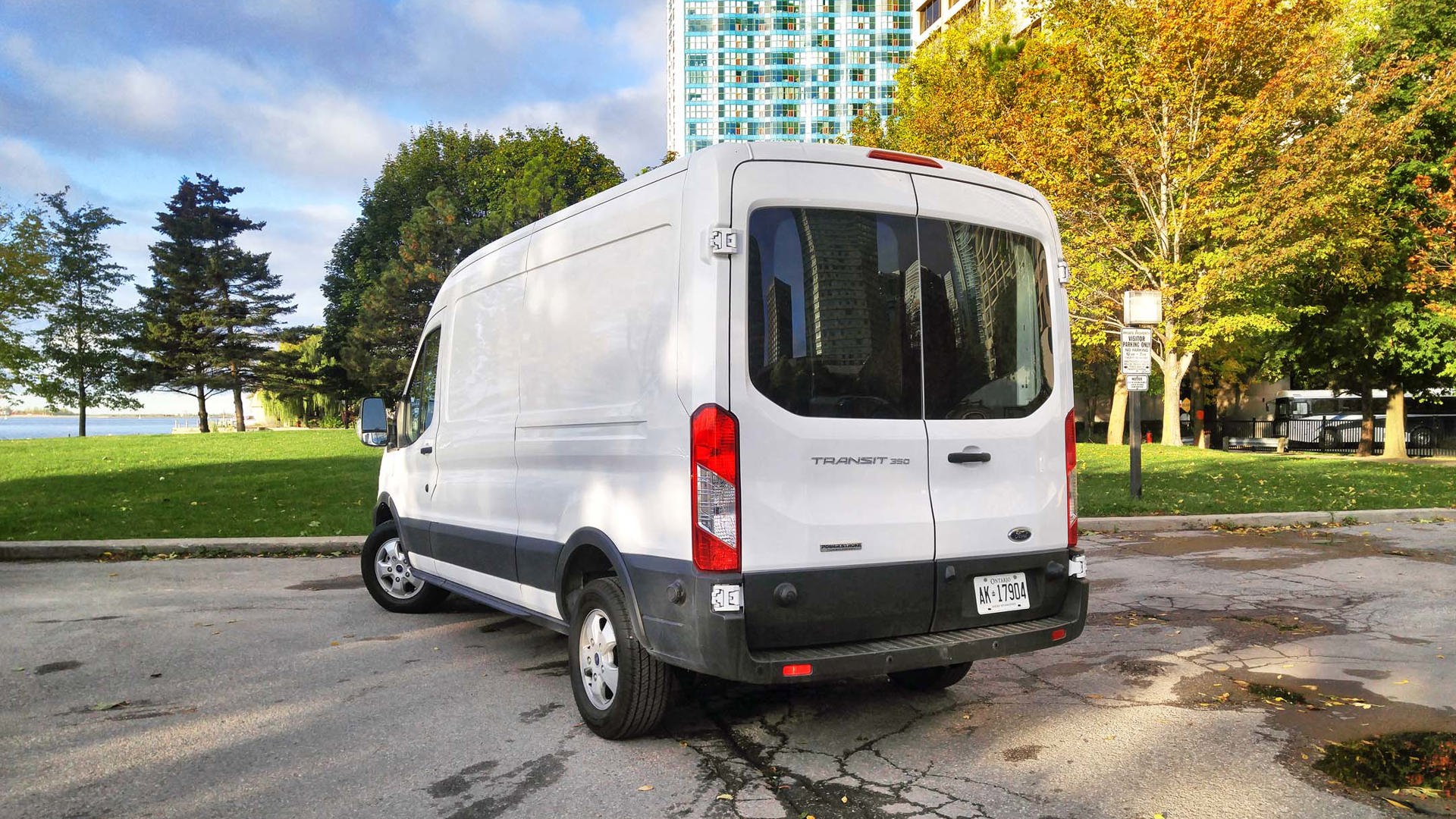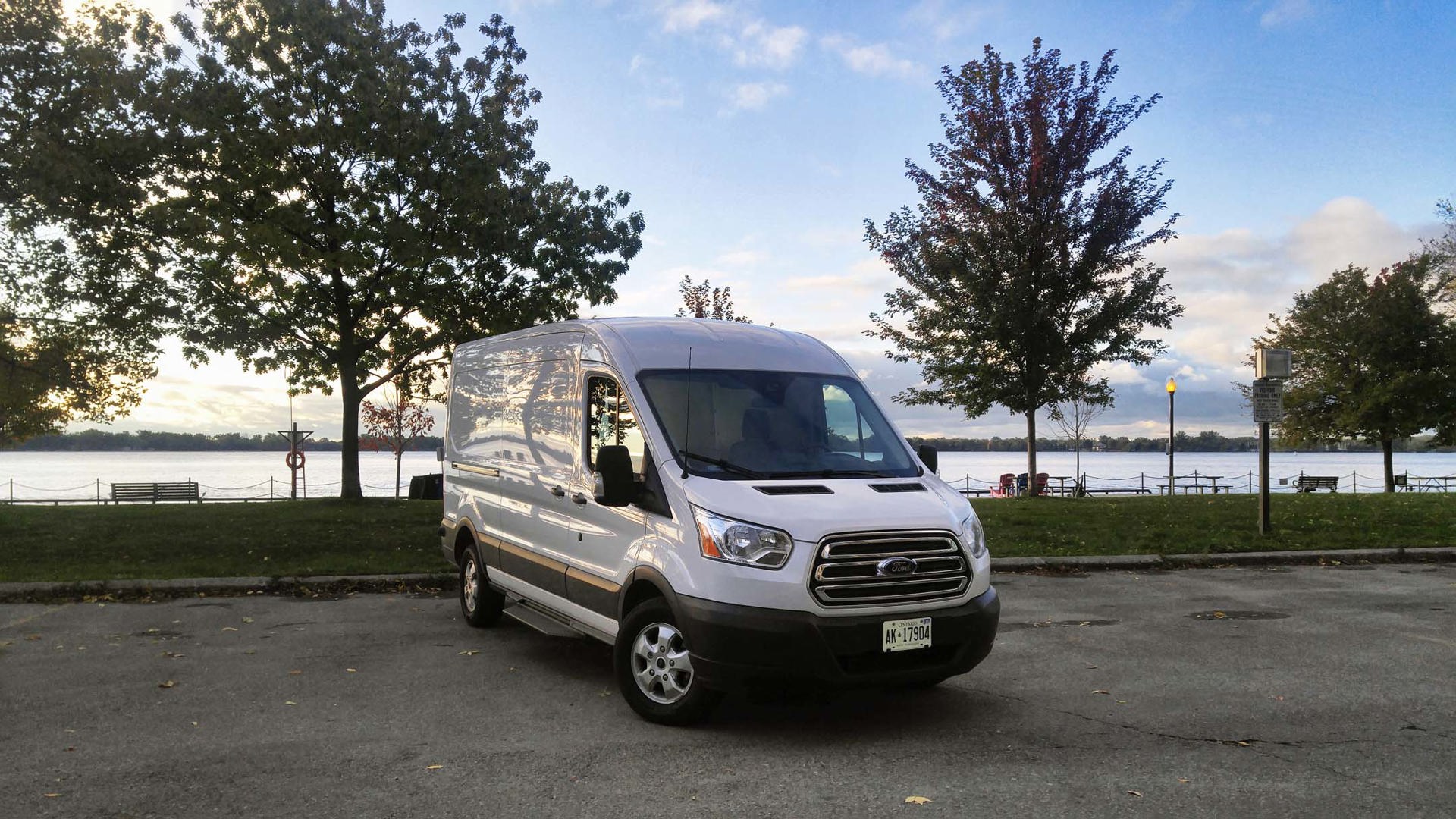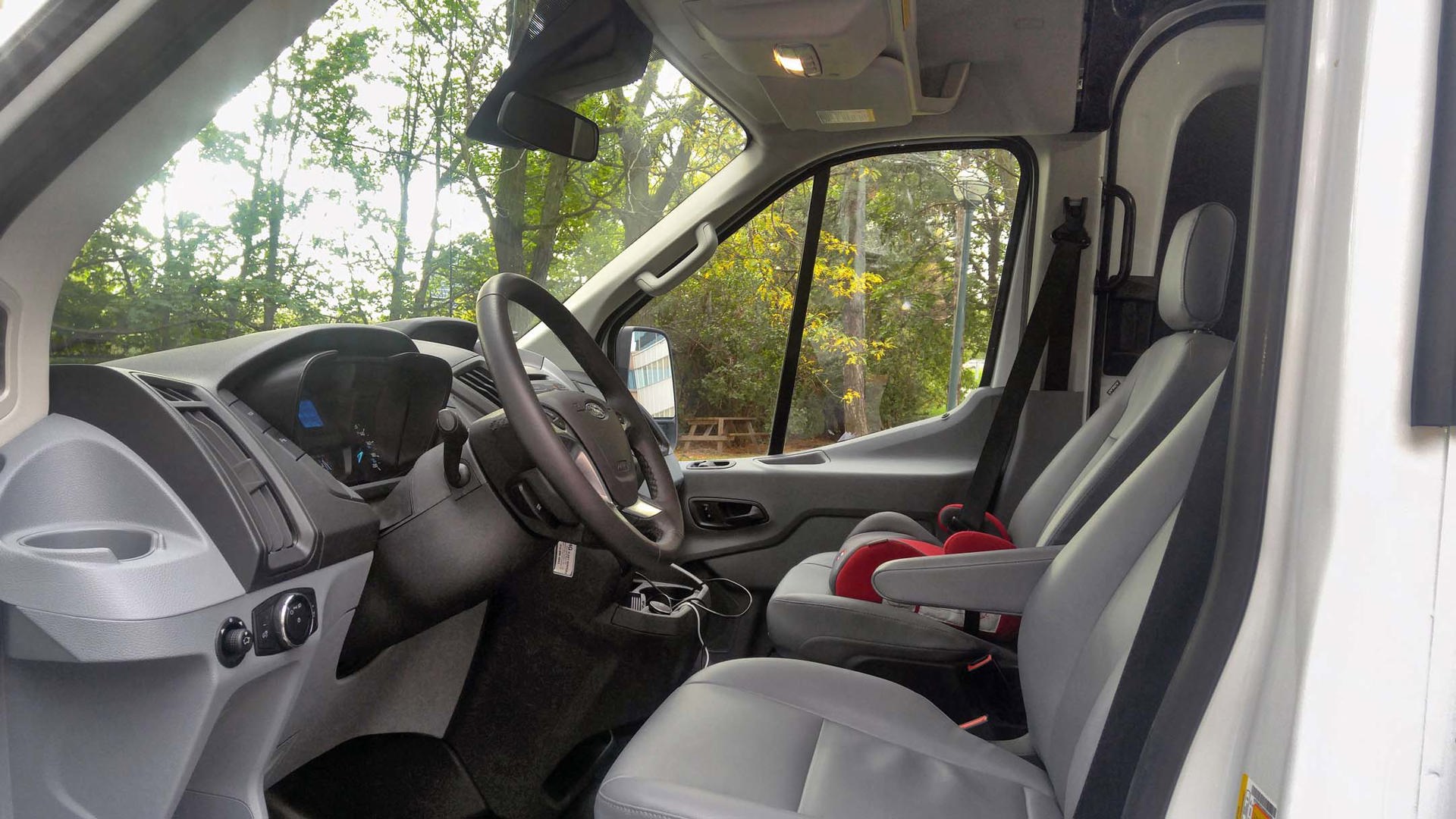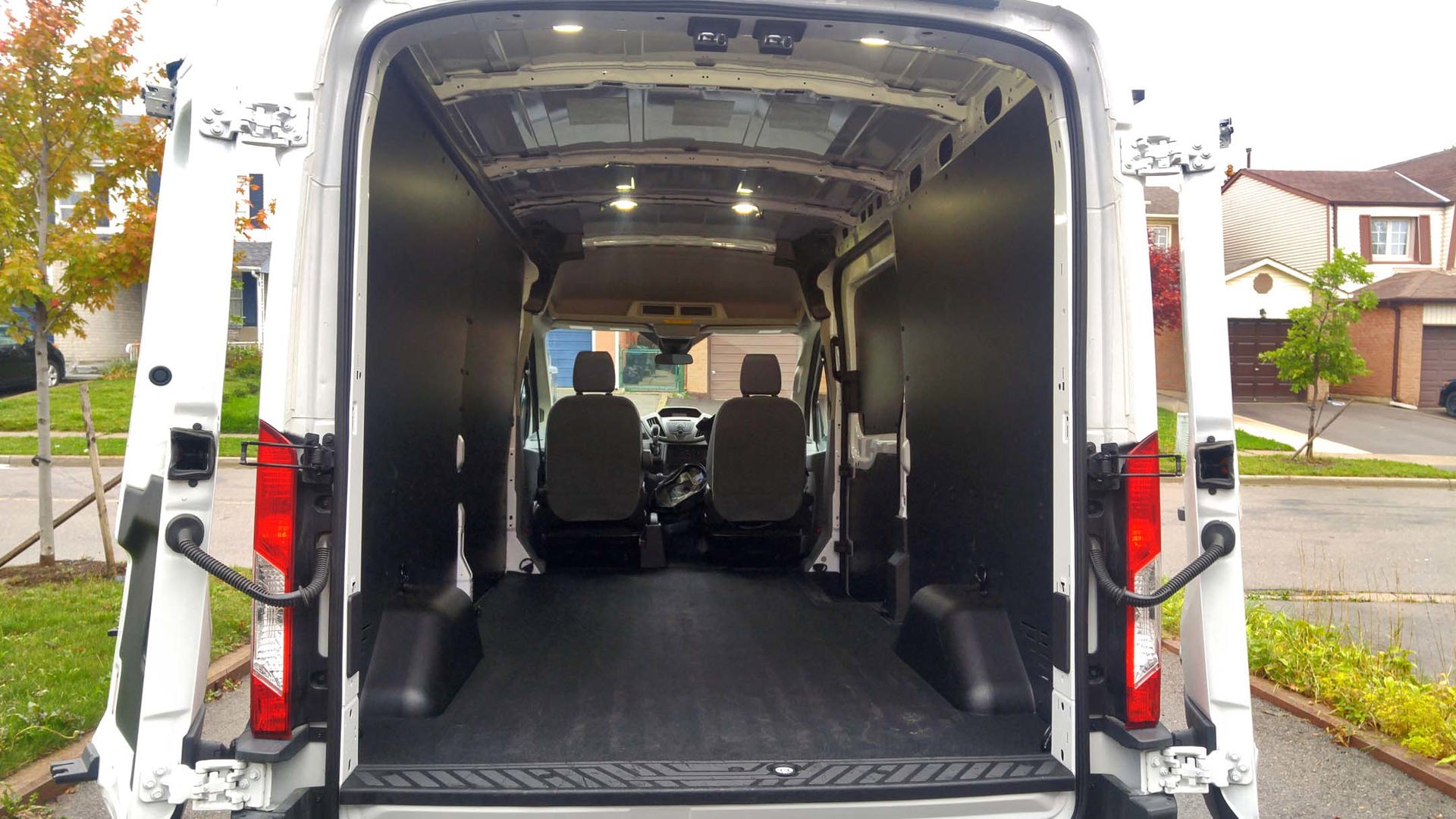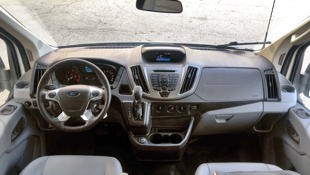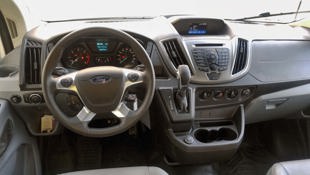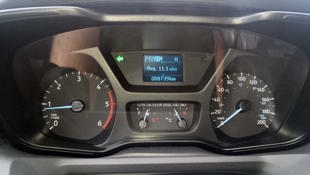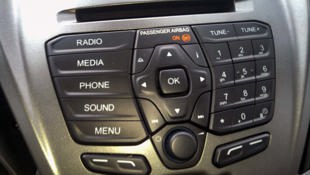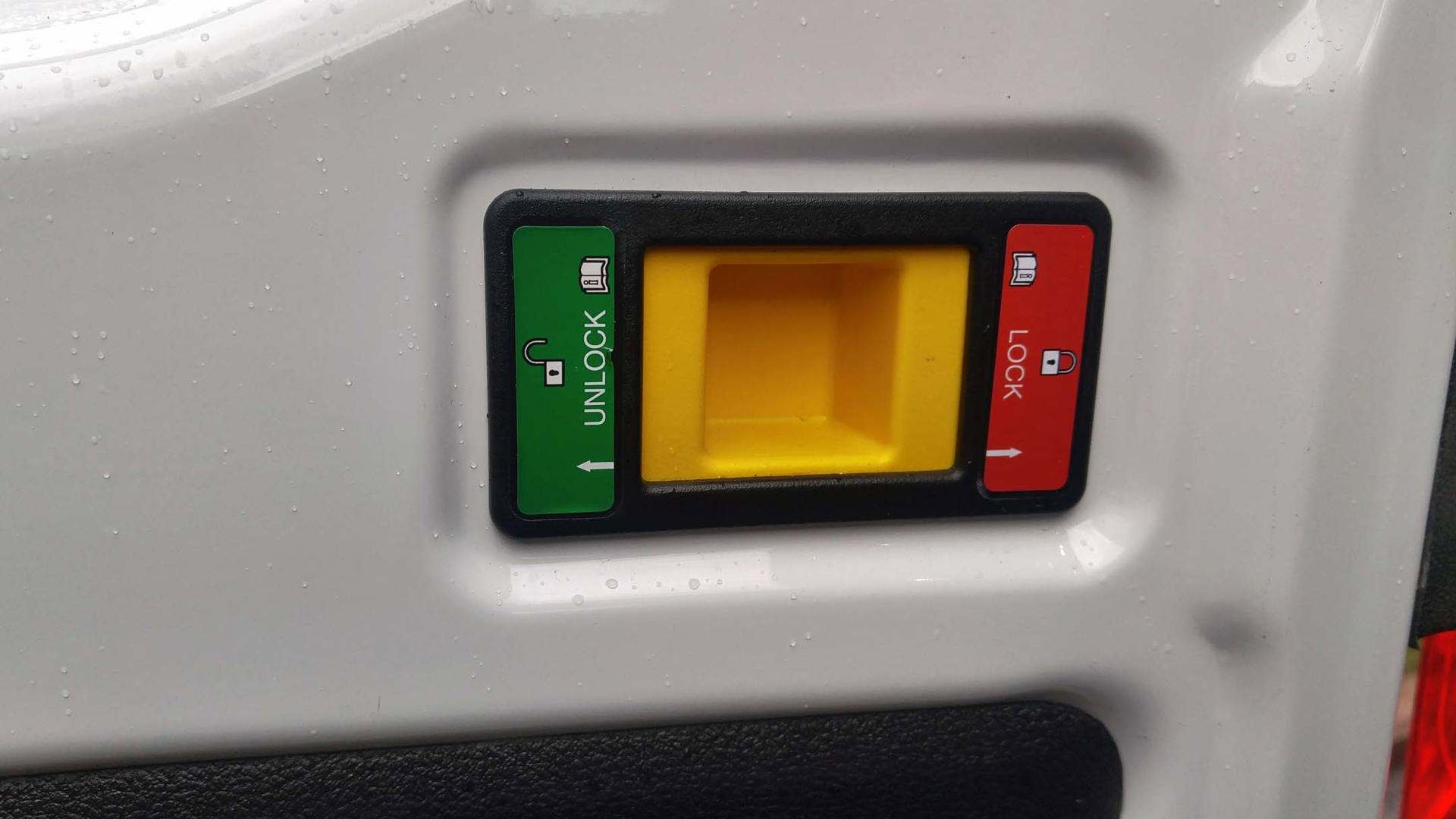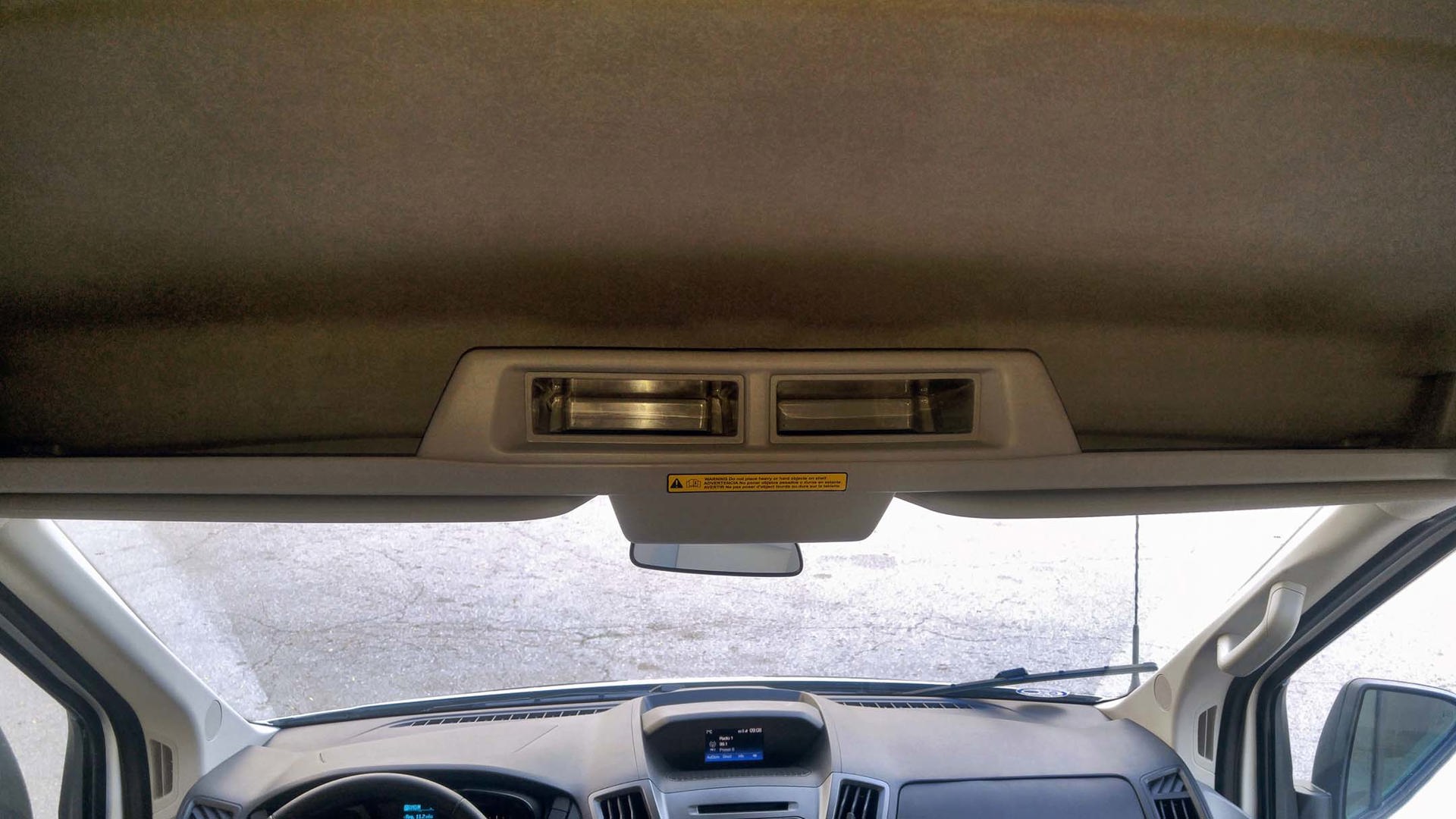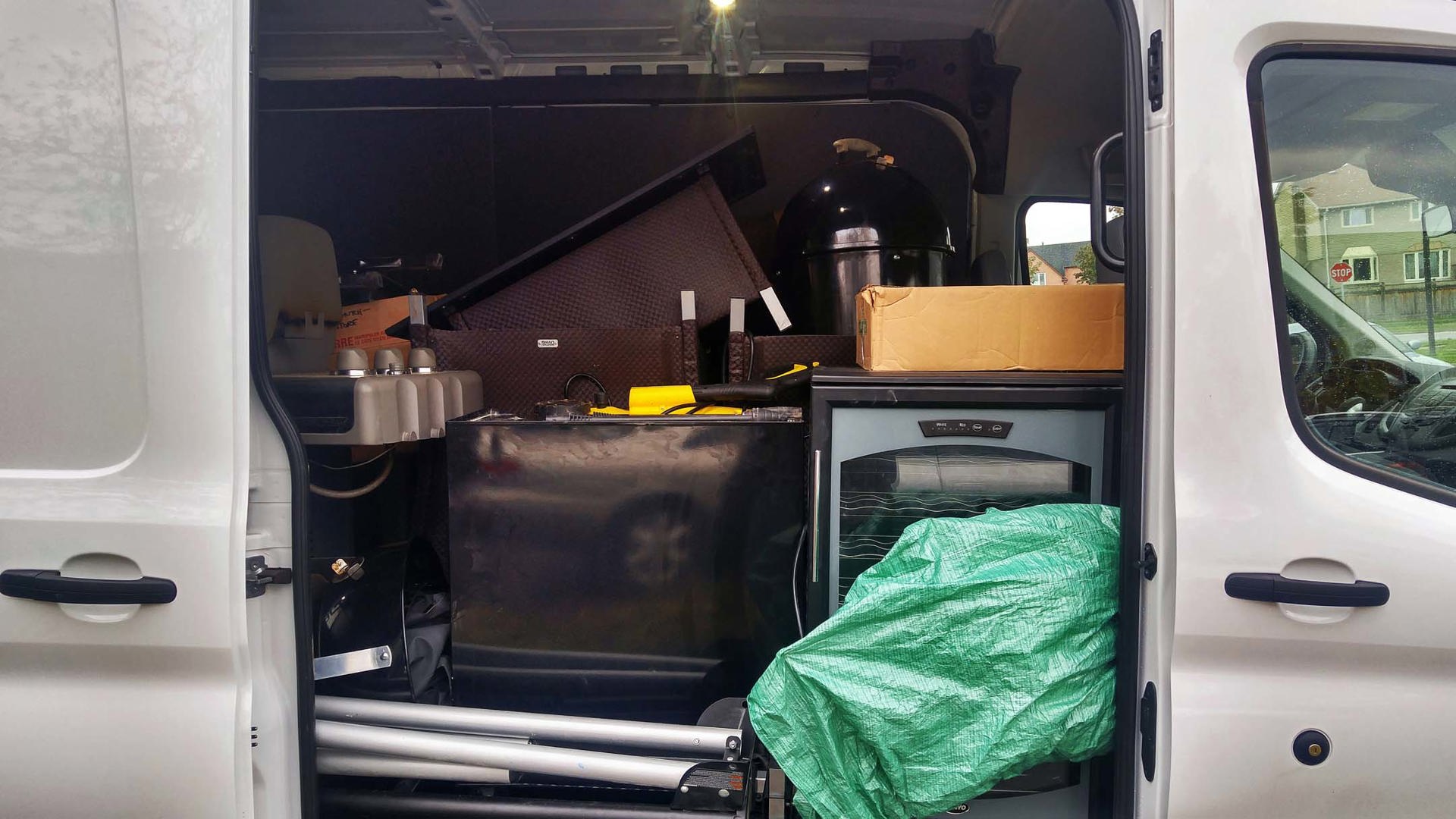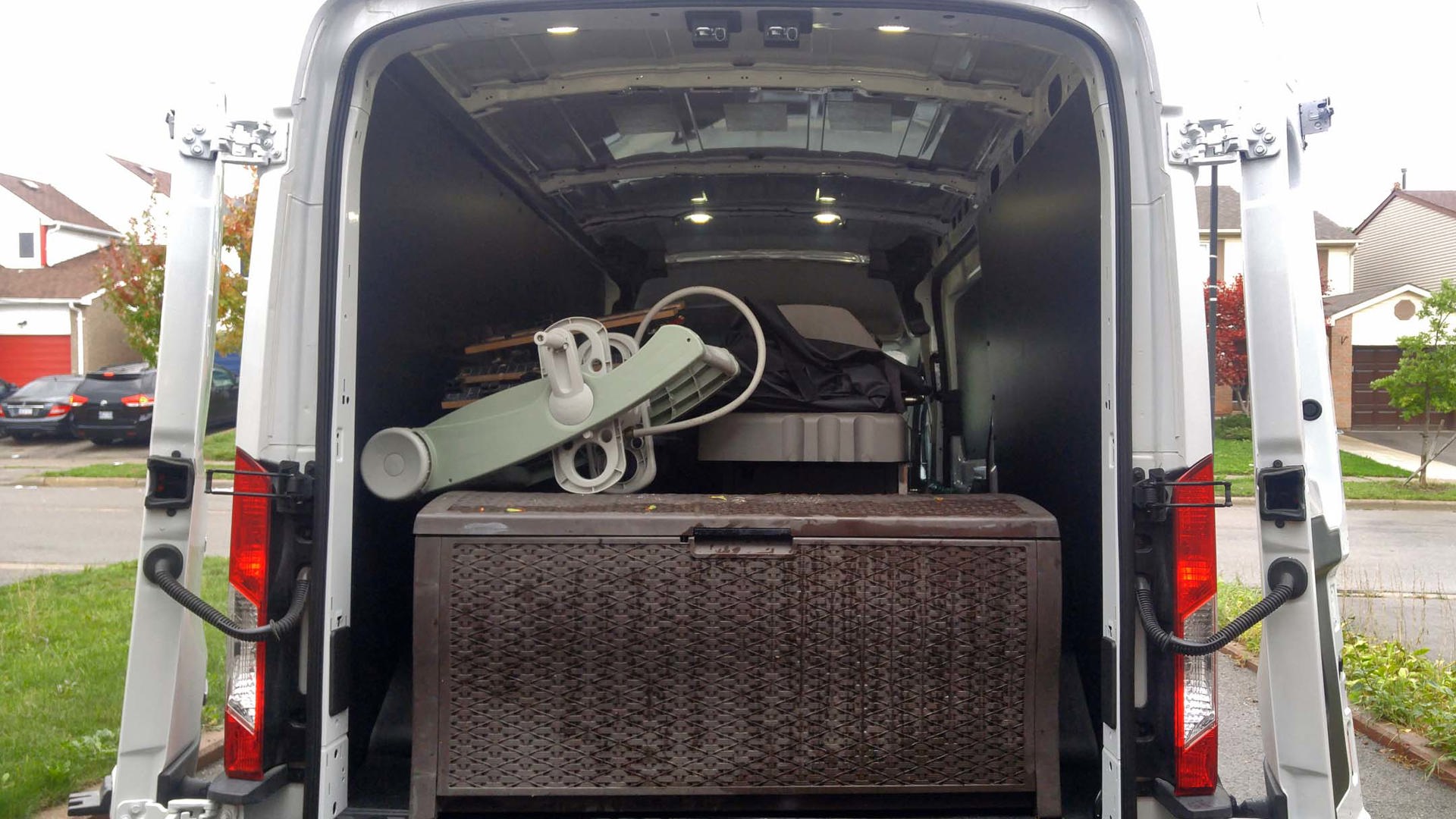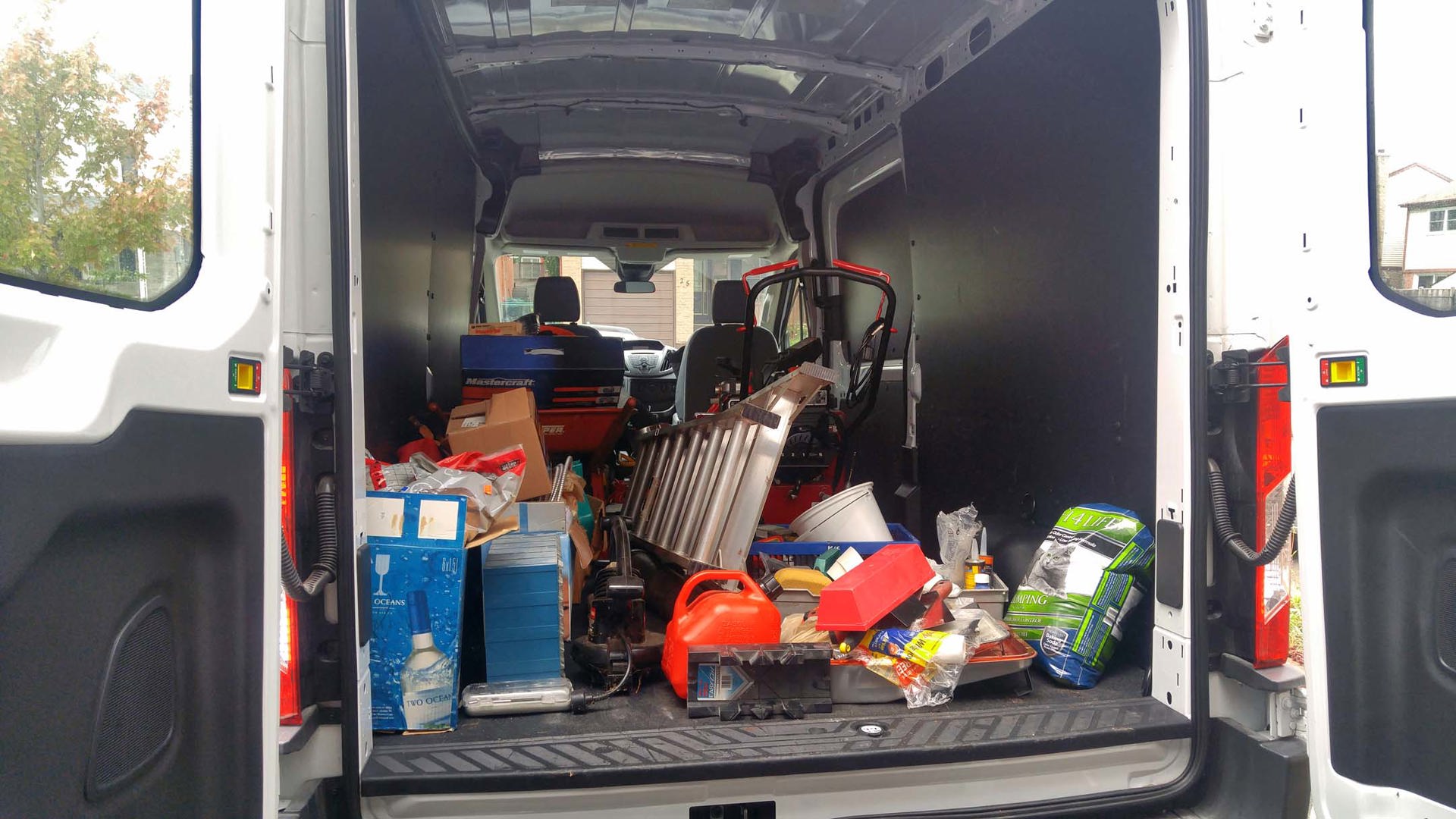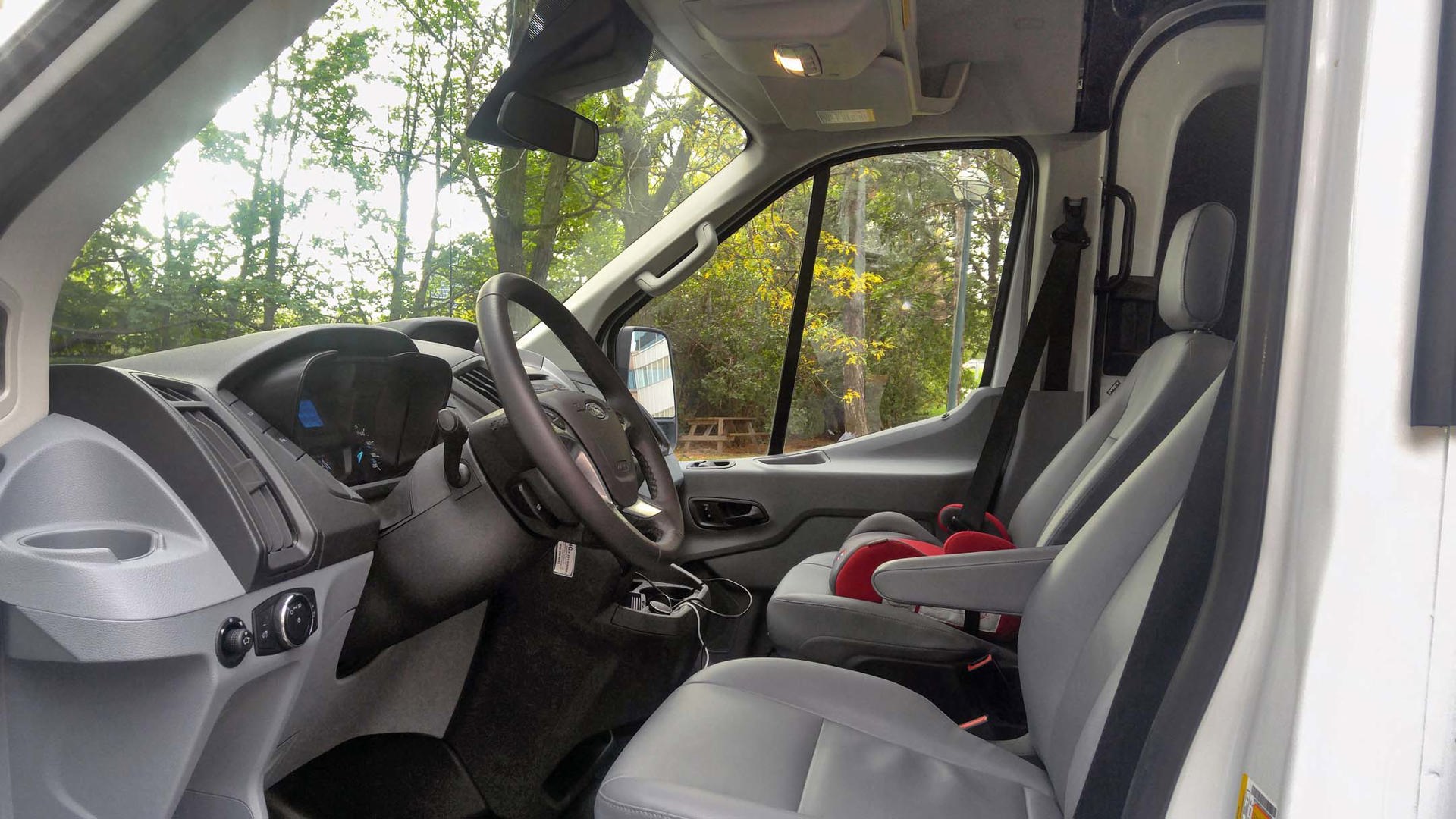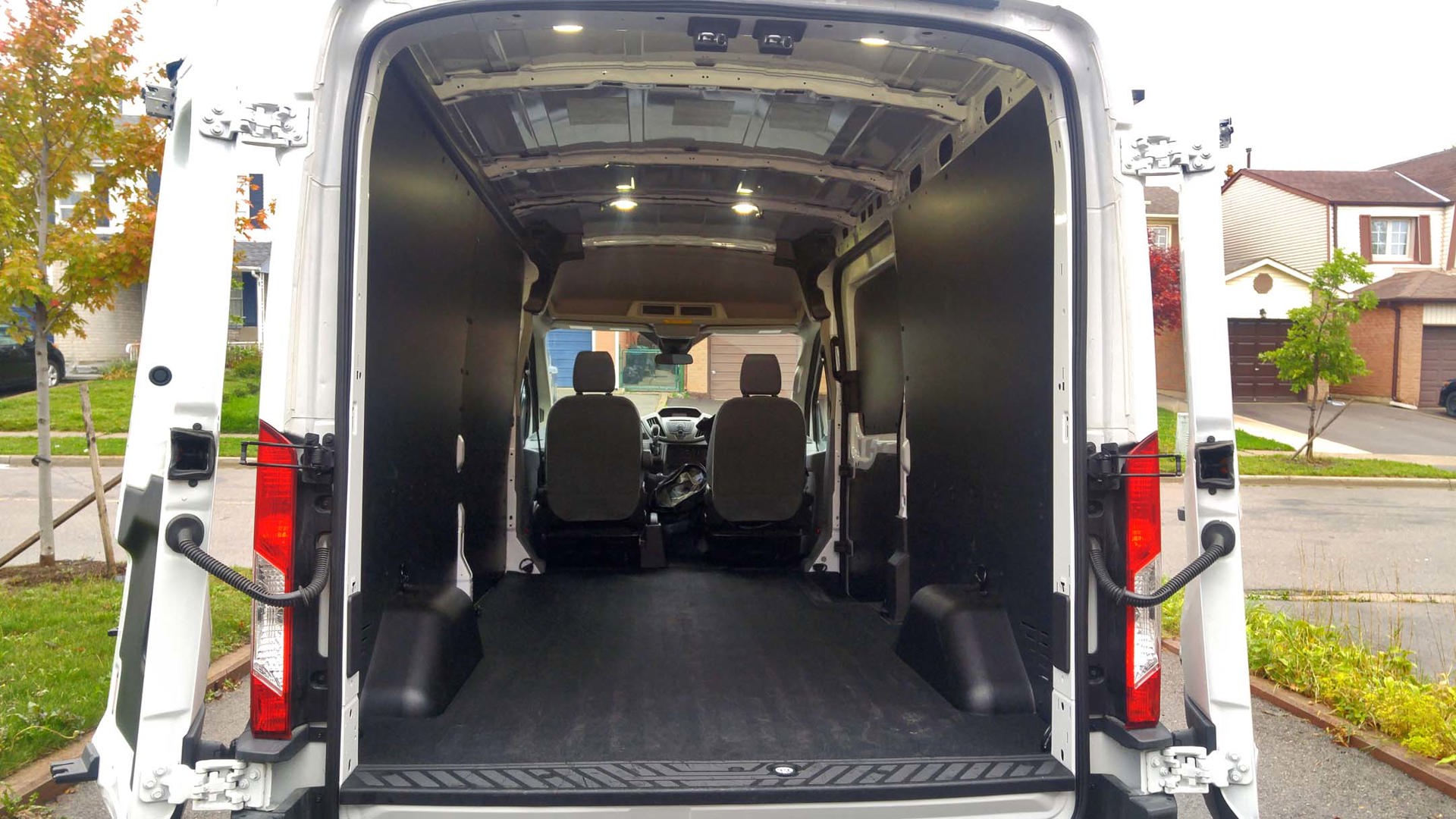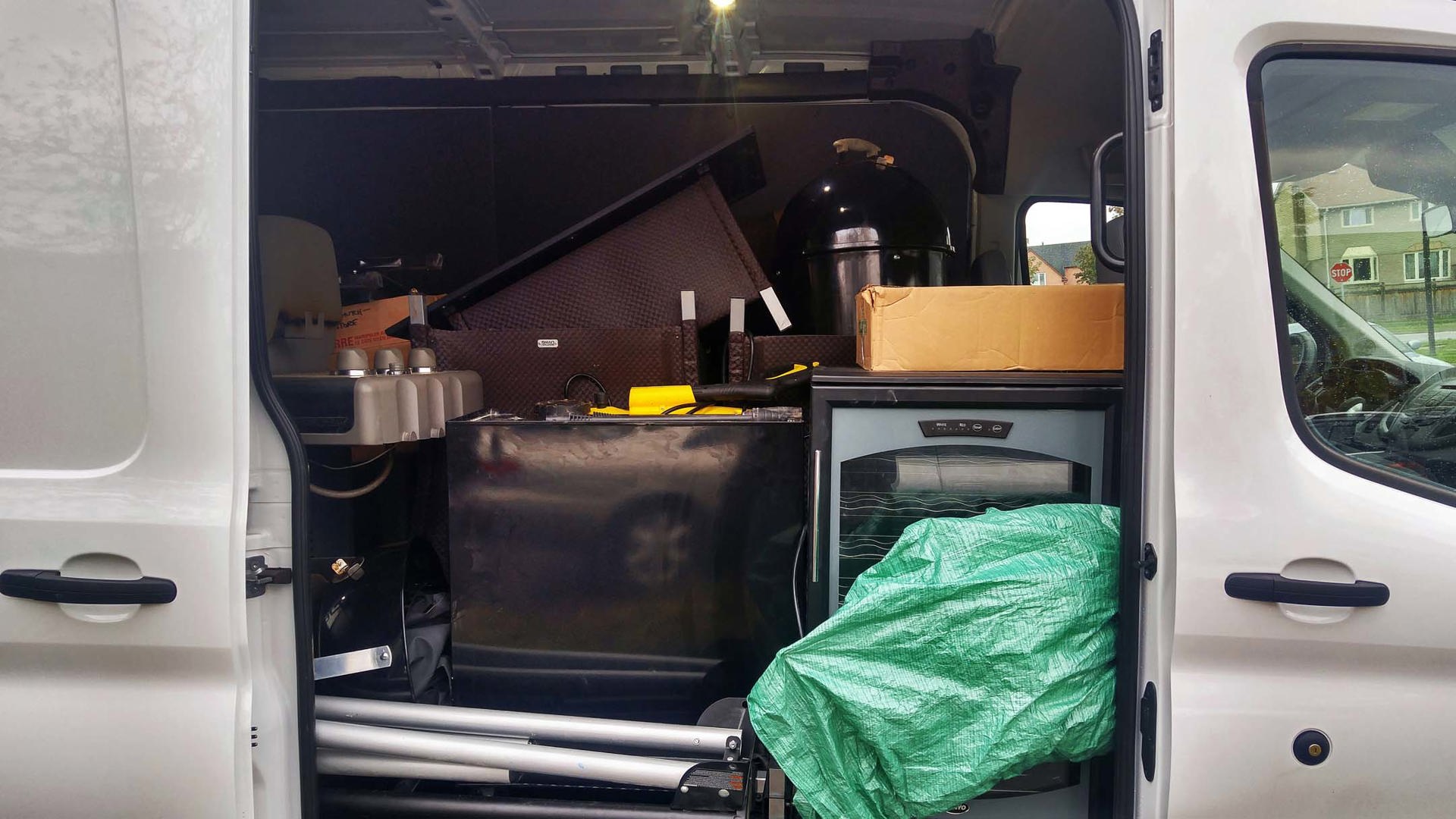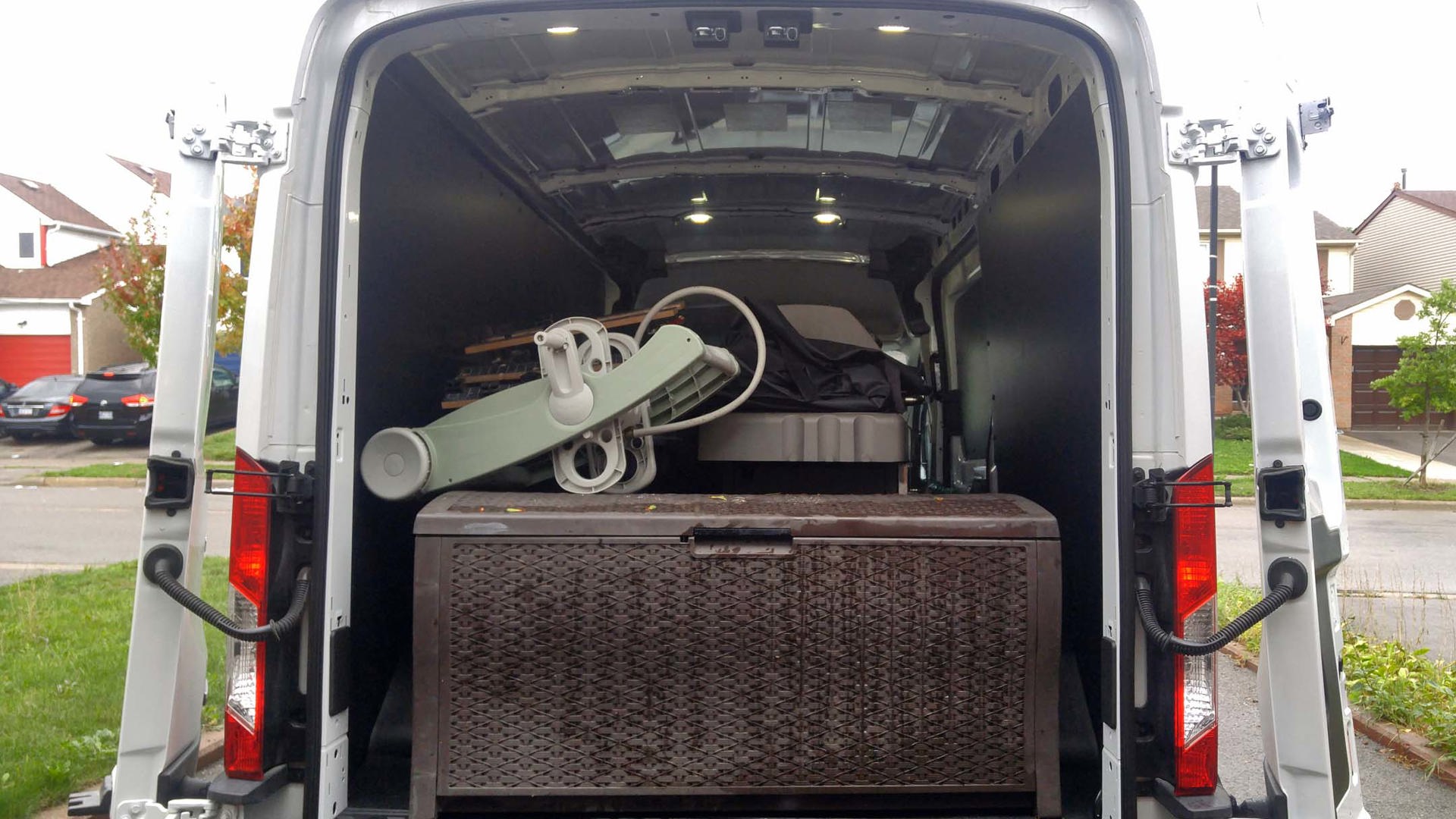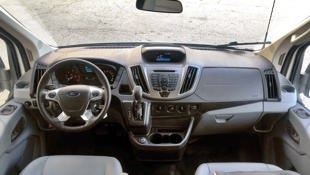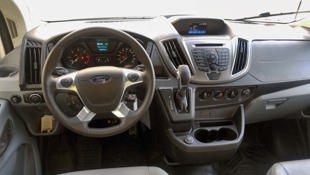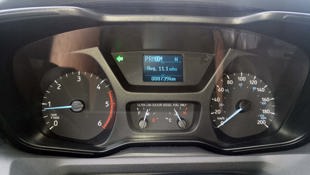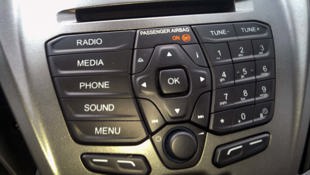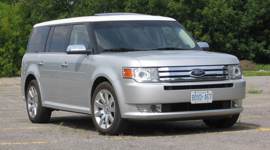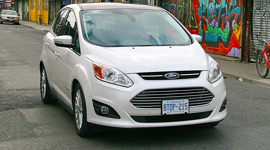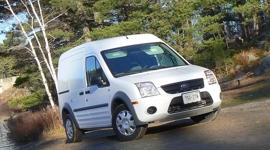 AutoTrader SCORE
AutoTrader SCORE
-
STYLING8/10
-
Safety7/10
-
PRACTICALITY9/10
-
USER-FRIENDLINESS8/10
-
FEATURES7/10
-
POWER7/10
-
COMFORT8/10
-
DRIVING FEEL7/10
-
FUEL ECONOMY9/10
-
VALUE7/10
For years in North America, a commercial van meant a Ford E350-style rig and not much else. Euro-style vans came to our shore for a while when Dodge sold rebranded Mercedes-Benz Sprinters as the creatively named Dodge Sprinter. Then, when Chrysler and Daimler decided to see other people, Mercedes-Benz sold the Sprinter in its original brand.
Ride quality in the Transit is impeccable.
The Dodge ProMaster popped up recently, around the same time Ford decided to bring its world-car approach to the segment and import the highly popular Transit van from Europe.
It’s this, the 2017 Ford Transit 350 long-wheelbase, medium-roof edition that I took out recently. As regular readers know, we make sure that when we test a cargo van, we use it properly – no hauling air on these pages. Well, not in our cargo vans at least. This time, we used the Transit to empty an entire household of contents and move those contents to a secret location.
Do you like surprises? I do. And it wasn’t until I made my first fuel stop that I noticed the Transit’s powerplant. Opening the door with the engine idling I was halted in my tracks, “Wait, this is a diesel?”
It is. A 3.2L inline-five diesel, itself a $5,995 option on top of this Transit 350’s $41,749 base price. It’s good for 185 hp and 350 lb-ft of torque – 90 percent of which is available from 1,500 rpm. From the driver’s seat the diesel is all but unnoticeable. Power delivery is smooth and proficient, engine noise is negligible for a cargo van, and the typical diesel clatter has either been tuned out by the engine department, or well disguised by the body guys.
One typical trademark of diesels is incredible highway efficiency. This is usually paired with terrible city economy – but not so here. After a week of almost exclusively city driving, and a fair chunk of that fully loaded, I landed on an observed 11.2 L/100 km. That’s better than the lower and leaner Ram ProMaster I tested earlier in the year.
Diesels occasionally suffer from a build-up of soot in the system that cleans up the exhaust gas before sending it out into the atmosphere. Manual regen, a $375 option, allows the driver to raise exhaust temperature, and thereby burn off the soot in the diesel particulate filter.
Our tester had the medium roof and 148” wheelbase (as opposed to 130”). There are three rooves available: 2,123 mm, 2,560, and 2,797 mm that give cargo heights of 1,446, 1,830, and 2,069 mm respectively. By comparison, the ProMaster has a 1,651 mm interior height in low-roof trim, and 1,930 mm in its high-roof edition (corresponding to the Transit’s “medium” roof).
With the long wheelbase, the cargo length is 4,373 mm and width is 1,392 mm. Going for the dual-wheel axle narrows that to 1,154 mm.
The cargo doors open on a stepped hinge, so they will open and stay in place at 90 degrees, or wrap around to the sides of the van for easy access. The load point is a little higher than it is in the ProMaster, courtesy of the rear-wheel drive layout here. On the plus side, you could probably power-slide this one in the snow… if you enjoy rolling cargo vans, that is.
I complained about the ProMaster’s super-light steering – if that sort of thing bothers you then the Transit’s steering weight will be a better fit. And while my friend made the point that it makes for a more fatiguing day of driving, I found that this heftier feel made for a more confident and less busy driving experience. That’s particularly important on the highway, where vans are steered by the wind as much as by the driver.
The $350 load-area protection package fitted here meant I wasn’t as worried about harming the sides of the truck with all the miscellaneous household and garage gear I had to shift, but I wanted more strapping points.
Ride quality in the Transit is impeccable. Fully loaded with loose tools, metal, and other rattly, clangy, bangy stuff, I expected to be accompanied down the street by a discordant orchestra. The Transit instead remained a calm, quiet place to be, with the suspension keeping the cargo area well insulated from the rigours of Toronto’s roads. The driver’s seat is comfortable enough, and I much preferred the seating position in the Transit to the ProMaster which had an awkward forward cant.
The infotainment system is an issue. I don’t understand why commercial vehicles are fitted with the worst radios – surely if you’re spending all day driving something you’d want it to be decent enough for music. And the lack of Android Auto/Apple CarPlay is perplexing. If anyone needs to have easy access to voice-activated navigation, address look-up, and messaging – it’s delivery drivers. These things should be standard, but they are a $2,200 option - so at least you can get them.
And if I was a delivery driver in Canada, I’d really want a heated seat and steering wheel. You can get a $775 heated seat, but not a heated steering wheel. Not having that option means the poor blokes who have to drive these things in winter have to wear gloves constantly – no wonder my FedEx packages have always been dropped. Poor driver’s hands are frozen!
Apart from those two minor quibbles, the Transit is an easy-to-drive, fuel-efficient, and even kind of attractive cargo van.
It’s a hard call. Between the Sprinter, ProMaster, and Transit your ultimate decision will likely come down to the individual packaging needs of you and your business.
For those who want a smaller overall unit with more interior space, the ProMaster is probably the way to go. But the Transit drives more nicely, and has better fuel economy in diesel guise.
Regardless of where you land, it’s fair to say that Ford’s decision to bring the Transit here was a good one, and this LWB, medium-roof unit lands right in the sweet spot.
| Engine Displacement | 3.2L |
|---|---|
| Engine Cylinders | I5 |
| Peak Horsepower | 185 hp @ 3,000 rpm |
| Peak Torque | 350 lb-ft @ 1500–2500 rpm |
| Fuel Economy | 11.2 L diesel observed |
| Cargo Space | 10,111 L |
| Model Tested | 2017 Ford Transit 350 |
| Base Price | $41,749 |
| A/C Tax | $100 |
| Destination Fee | $1,700 |
| Price as Tested | $53,934 |
|
Optional Equipment
$10,385 – 3.2L I5 diesel engine $5,995; 3.31 limited-slip diff $370; wheel-well liners $350; fixed rear door glass $75; exterior upgrade package $360; back-up alarm- $150; reverse park aid $510; power heated mirrors $165; AM/FM cd player with Sync $900; easy-clean styled aluminum $525; running board passenger side $260; load area protection package $350; manual regen with active inhibition $375
|
|
